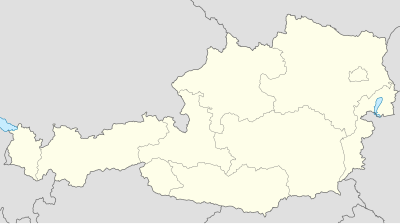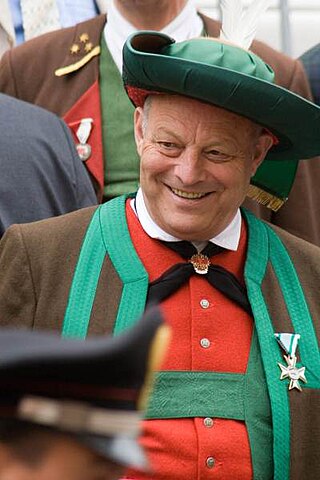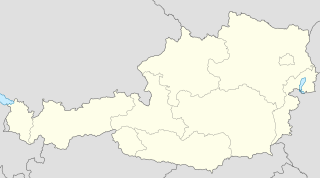Federalism and federal state powers
Each Austrian federal state has an elected legislature, the federal state parliament , and a federal state government (Landesregierung) headed by a governor (Landeshauptmann or Landeshauptfrau). Elections are held every five years (six years in Upper Austria). The federal state constitution, among other things, determines how the seats in the federal state government are assigned to political parties, with most federal states having a system of proportional representation based on the number of delegates in the federal state parliament in place. The governor is elected by the federal state parliament, though in practice the governor is the leader of the majority party or coalition in the federal state parliament.
Vienna, the capital of Austria, plays a double role as a city and a federal state. The mayor has the rank of a federal state governor, while the city council also functions as a federal state parliament. Under the municipal constitution, however, city and federal state business must be kept separate. Hence, while the city council and the federal state parliament have identical memberships, they hold separate meetings, and each body has separate presiding officers. When meeting as a city council, the deputies can only deal with city affairs; when meeting as a federal state parliament, they can only deal with affairs of the state.
Austrian federalism is largely theoretical, as the federal states are granted few legislative powers. The federal constitution initially granted all legislative powers to the federal states, but many powers have been subsequently taken away, and only a few remain, such as planning and zoning codes, nature protection, hunting, fishing, farming, youth protection, certain issues of public health and welfare and the right to levy certain taxes.
All other matters, including but not limited to criminal law, civil law, corporate law, most aspects of economic law, defense, most educational matters and academia, telecommunications, and much of the healthcare system are regulated by federal laws. There is also no judiciary of the federal states, since the federal constitution defines the judiciary as an exclusively federal matter. This centralisation follows a historic model where central power during the time of the empire was largely concentrated in Vienna.
However, the federal state governor ( Landeshauptmann ) is in charge of the administration of much of federal administrative law within the respective province, which makes this post an important political position. Furthermore, federal state competences include zoning laws, planning issues and public procurement on the regional level, which adds considerable weight to federal state politics. As a practical matter, there have been cases where federal states have been able to block projects endorsed by the federal government, as in the case of a railway tunnel that was to be built below the Semmering.
Austrian federal states are formally and practically endowed with a much smaller degree of autonomy than American states or German lands. Even so, Austrians tend to identify passionately with their respective federal state and often defend what little independent governance their federal state has. It is not unheard of for Austrians to consider themselves, for instance, Tyrolean first, Austrian second.
Historical development
In terms of boundaries, the present-day federal states arose from the crown lands of Austria-Hungary, an extensive multiethnic realm whose German-speaking nucleus emerged as the Republic of Austria after the dissolution of the Dual Monarchy in the end of World War I.
The federal states of Upper Austria and Lower Austria are essentially equivalent to what were the two halves of the Archduchy of Austria, a principality which formed the empire's historic heartland. Salzburg is coterminous with the former Austro-Hungarian Duchy of Salzburg (the former Archbishopric). Similarly, the federal state of Carinthia descends from the Duchy of Carinthia, the federal state of Styria descends from the Duchy of Styria, and the federal state of Tyrol descends from the Princely County of Tyrol; these three federal states had to cede territories to Czechoslovakia, Italy, and Yugoslavia when Austria emerged in its present form. The federal state of Vorarlberg is made up of territories acquired by the House of Habsburg in the 14th and 15th centuries, [2] : 73 and was a semi-autonomous part of the County of Tyrol from 1861.
The 1815 Congress of Vienna saw most of these areas lose their autonomy. Federal state charters were put in place in 1861, although power remained with the central government. Following the First World War, the federal state governments declared themselves part of the Republic of German-Austria. Negotiations at this time between the federal state governments and the national governments resulted in the agreement to form a federation, with a nationally elected lower house and an upper house representing the provinces. [2] : 73–74
The city-federal state of Vienna was a part of Lower Austria up until 1921. [3] The federal state of Burgenland is made up of the predominantly German-speaking area that the Kingdom of Hungary until 1921 had to cede to the First Austrian Republic after World War I as a result of the Treaties of Trianon and Saint-Germain-en-Laye. [4]
















